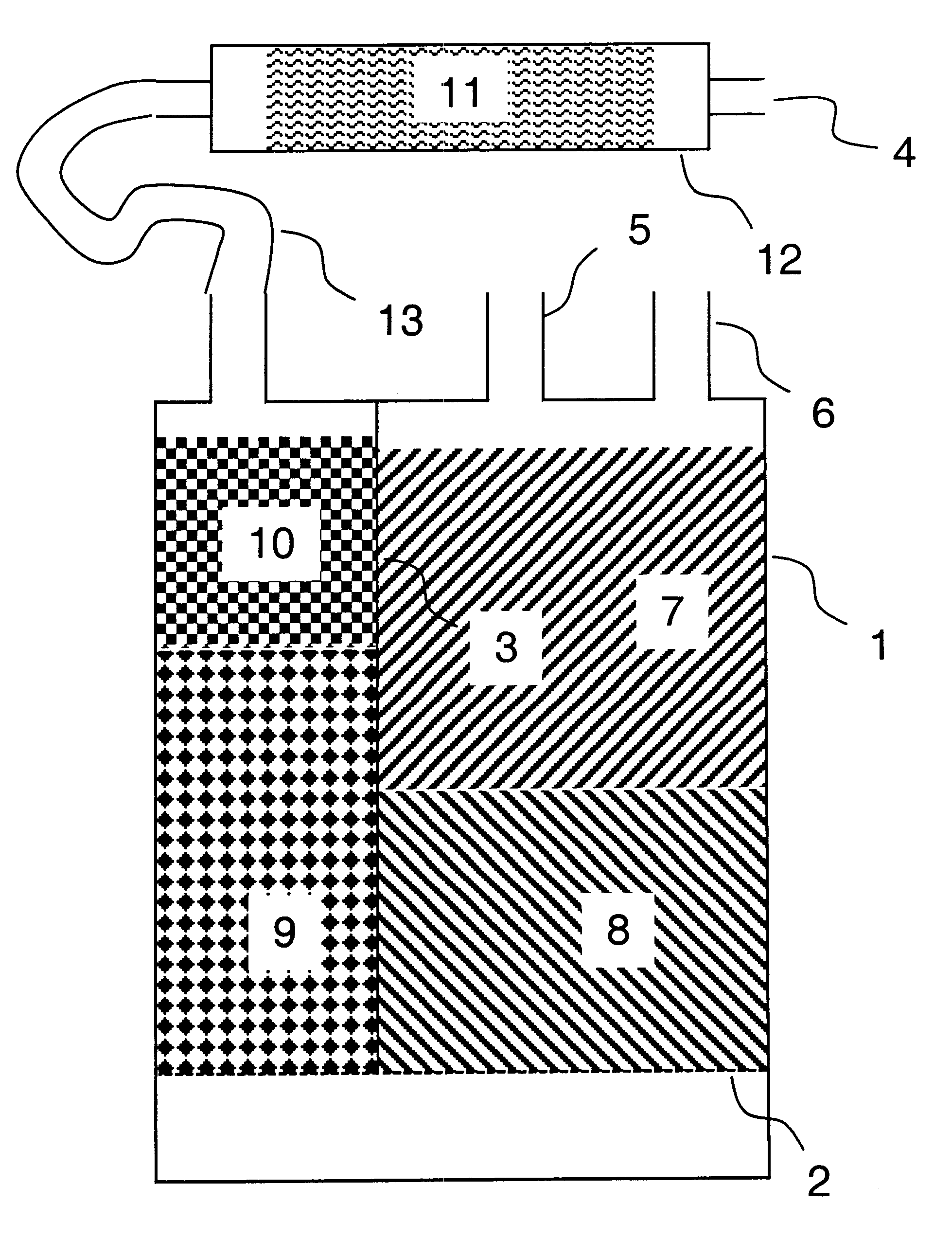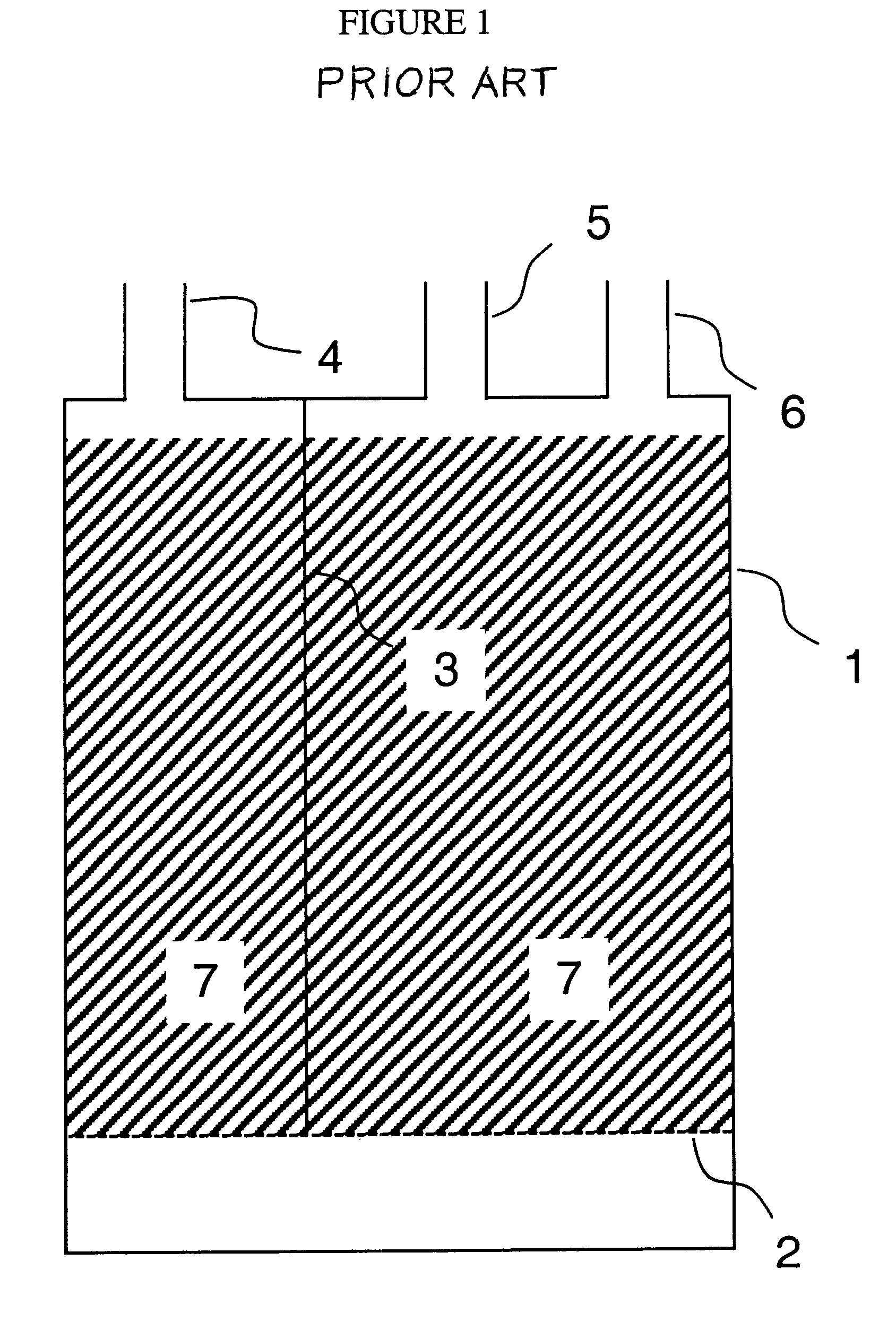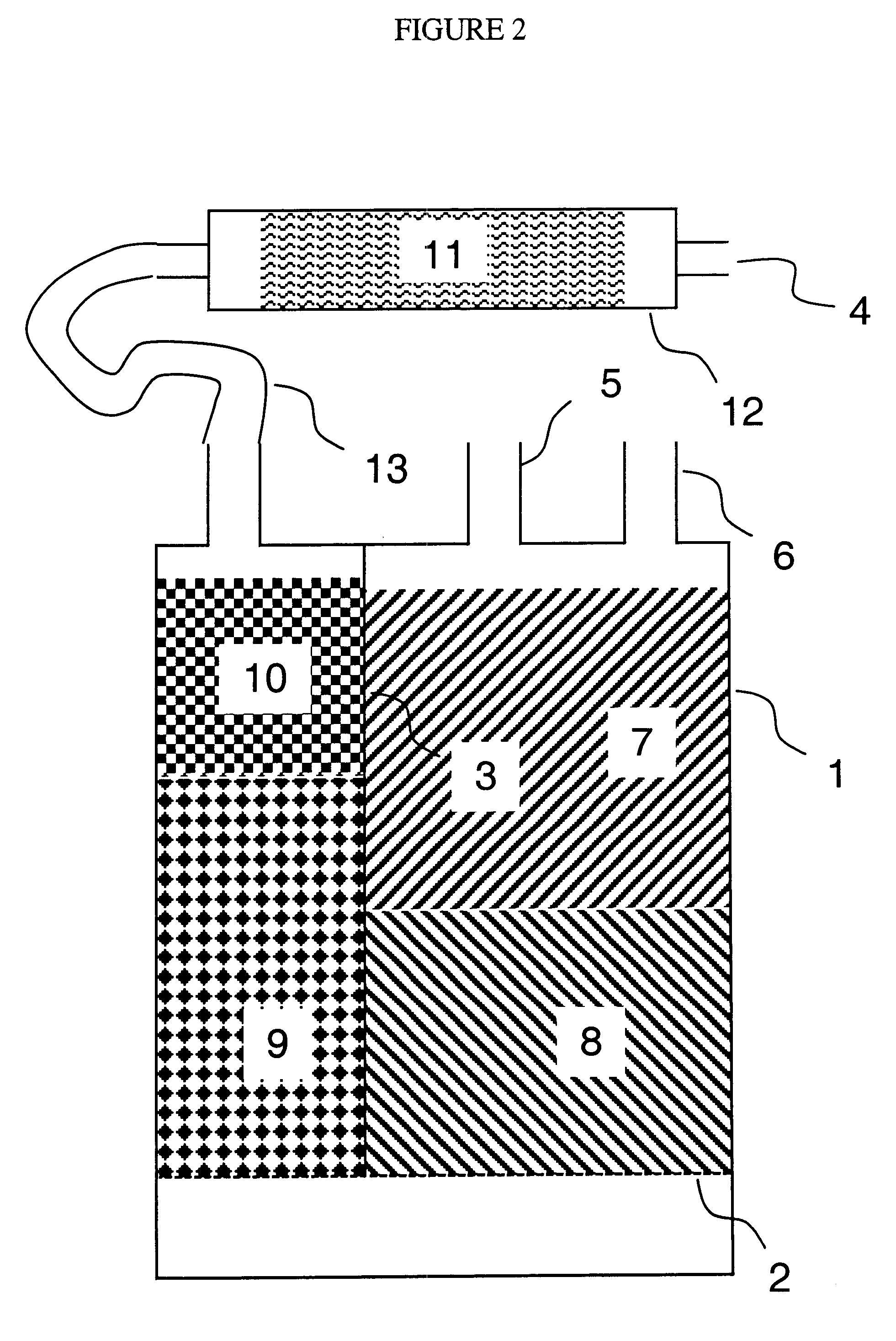Method for reducing emissions from evaporative emissions control systems
a technology of evaporative control system and emission reduction, which is applied in the direction of combustion-air/fuel-air treatment, other chemical processes, separation processes, etc., can solve the problems of unacceptably high flow restriction of somewhat smaller size particles, impede the diffusional transport of vapors, and hydrocarbon air pollution
- Summary
- Abstract
- Description
- Claims
- Application Information
AI Technical Summary
Benefits of technology
Problems solved by technology
Method used
Image
Examples
example 1
re Filler Pellets. These 2 mm pellets are an example of the volumetric dilution method by adding a solid filler to the extrusion formulation. The pellets were prepared from an extrusion blend consisting of Westvaco SA-1500 powder (12.8 wt %), solid glass microsphere filler (79.7 wt % PQ Corporation A3000), bentonite clay (7.2 wt %), and phosphoric acid (0.3 wt %). The pellets were tumbled for four minutes, dried overnight at 105.degree. C., and subsequently heat-treated in steam at 650.degree. C. for 15 minutes. An appropriate non-adsorbing filler reduces adsorption capacities across all vapor concentrations, resulting in a flattened adsorption isotherm ("Example 1" in FIG. 3). Alternative methods for diluting the vent-side region are to co-mix adsorbent granules or pellets with inert filler particles of similar size, to form the extrusion paste into high voidage shapes such as hollow cylinders, asterisks, stars, or twisted, bent, or spiral ribbon pieces, or to place multiple thin l...
example 2
ound Honeycomb. The 200 cpsi (cells per square inch) carbon-containing honeycomb is another example of the volumetric dilution method. The honeycomb in the Table was prepared according to the method described in U.S. Pat. No. 5,914,294, which discloses forming an adsorptive monolith comprising the steps of (a) extruding an extrudable mixture through an extrusion die such that a monolith is formed having a shape wherein the monolith has at least one passage therethrough and the extrudable mixture comprises activated carbon, a ceramic forming material, a flux material, and water, (b) drying the extruded monolith, and (c) firing the dried monolith at a temperature and for a time period sufficient to react the ceramic forming material together and form a ceramic matrix. The extrudable mixture is capable of maintaining the shape of the monolith after extrusion and during drying of the monolith.
In this example, the extrusion formulation ingredients partially dilute the carbon adsorbent, a...
example 3
recursor Pellets: These 2 mm pellets were prepared by selecting the adsorbent to be extruded according to its intrinsic flat isotherm adsorption properties. In this example, there was no special provision for filler in the formulation or bed voidage dilution from the extruded shape. The ingredients for the extrusion blend producing the tested activated carbon pellets consisted of SX 1 grade activated carbon produced by NORIT (93.2 wt %) and sodium carboxymethyl cellulose binder system (6.8 wt %). The pellets were tumbled for four minutes, dried overnight at 105.degree. C., and subsequently heat-treated in air at 150.degree. C. for three hours.
As noted above, the comparisons of these activated carbon containing materials, prepared as set forth in the examples, is shown in the following Table.
The Table shows data for the three examples of these two approaches compared with vent-side layers containing high working capacity carbons, BAX 1100 and BAX 1500. Compared with the state of the ...
PUM
| Property | Measurement | Unit |
|---|---|---|
| width | aaaaa | aaaaa |
| diameter | aaaaa | aaaaa |
| adsorption capacity | aaaaa | aaaaa |
Abstract
Description
Claims
Application Information
 Login to View More
Login to View More - R&D
- Intellectual Property
- Life Sciences
- Materials
- Tech Scout
- Unparalleled Data Quality
- Higher Quality Content
- 60% Fewer Hallucinations
Browse by: Latest US Patents, China's latest patents, Technical Efficacy Thesaurus, Application Domain, Technology Topic, Popular Technical Reports.
© 2025 PatSnap. All rights reserved.Legal|Privacy policy|Modern Slavery Act Transparency Statement|Sitemap|About US| Contact US: help@patsnap.com



